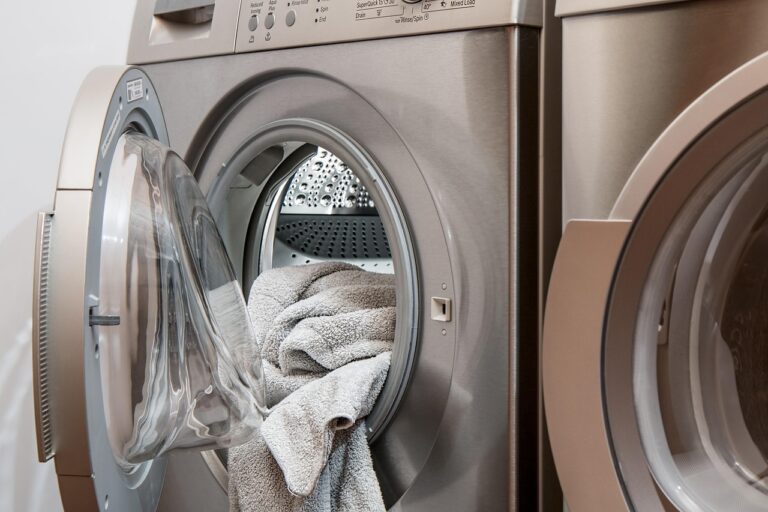
Is a Laundromat Truly Passive Income? A Balanced Look
Chris Barrett
What Does “Passive Income” Actually Mean?
Passive income is generally defined as earnings that require little to no ongoing effort to maintain. According to the IRS, it includes money generated from rental activities or businesses in which the taxpayer does not materially participate. In everyday business terms, it’s often described as “making money while you sleep.”
But laundromats don’t neatly fit into this definition. While they can generate steady revenue without constant daily oversight, they still require time, decision-making, and management. For this reason, they’re better categorized as a form of semi-passive income. You may not be running them full-time, but they aren’t entirely hands-off either.
Why People View Laundromats as Passive Income
The idea of a laundromat as a passive income stream is appealing to many for several reasons. First and foremost, laundromats offer a steady, predictable demand. Laundry is a non-negotiable part of life—everyone needs clean clothes, and not every household has the space or appliances to handle that. This creates a reliable stream of customers, especially in urban areas, college towns, or neighborhoods with multi-family housing units. Additionally, many people consider laundry to be very personal! This means that they don’t expect a staff member next to them the whole time, furthering the idea that a laundromat is passive, because the majority of your customers will want some level of privacy and so you are not expected to be interacting with people the entire time they are there.
Another reason people view laundromats as passive is the ability to automate daily operations, which minimizes the need for full-time staff. With modern coin- or card-operated machines, cashless payment systems, and remote monitoring technology, an owner can operate and oversee their business with minimal physical presence. These features are what often lead people to believe laundromats are “set-it-and-forget-it” investments.
Laundromats also prove to be recession-resistant. Unlike luxury services that may get cut from a household budget during tough economic times, laundry remains a fundamental need. Even in financial downturns, people will continue to prioritize clean clothing, which makes laundromats a more resilient and dependable business compared to many other small business options. The combination of stable income, low staffing, and essential-service status is what makes laundromats such an attractive proposition for those seeking a source of passive—or semi-passive—income.
The Reality: It’s Not Entirely Passive
While laundromats offer many passive-like benefits, the reality is they’re not entirely hands-off. Many first-time buyers enter the space underestimating the operational demands required to keep things running smoothly. Regular maintenance is one of the biggest ongoing tasks—washers and dryers are mechanical machines, and mechanical machines break. When that happens, you’ll either need to be on-site or hire someone you trust to resolve the issue quickly, as downtime means lost revenue and frustrated customers.
Additionally, cleanliness plays a huge role in customer satisfaction and retention. A dirty laundromat not only drives away patrons but can also damage your reputation. While you can hire cleaners or attendants, managing them still requires oversight. In some locations, you may even need staff during business hours to ensure safety, answer questions, or restock vending machines and supplies. You will also need time to manage factors such as forgotten items, and have a system in place for things such as a lost-and-found or an unclaimed items closet.
Then there’s the matter of operational costs. Laundromats consume a lot of water, electricity, and gas, making utility bills a major expense. Combine that with rent, insurance, supplies, marketing to the right clientele, and equipment repairs, and your monthly overhead can significantly affect your bottom line. Paying attention to these factors will take up time each week, and may take up more time than you expect.
Lastly, the upfront investment and setup phase are far from passive. Finding a high-traffic, convenient location takes time and market analysis. You’ll also need to invest in commercial-grade machines, renovate the space for optimal layout and accessibility, and market the business to get customers in the door. This startup period often requires weeks—or even months—of intense involvement, planning, and capital before you reach a point where the business becomes even semi-passive.
What Makes It Closer to Passive
Laundromats become closer to passive income under the right conditions. By implementing the right systems and delegation strategies, owners can drastically reduce their weekly time commitment. Tools like management software, remote monitoring, and cashless payments let you track performance, spot issues, and oversee revenue from anywhere. Security systems and smart cameras also help reduce the need for physical presence.
Hiring staff or service providers can make the business more hands-off as well. Outsourcing cleaning, routine maintenance, and even customer support to part-time employees or contractors ensures operations run smoothly without requiring you to be on-site daily. While this reduces profit margins slightly, it increases the “passive” nature of the business.
Finally, location is everything. Placing your laundromat near college campuses, apartment complexes, or densely populated neighborhoods ensures a consistent flow of customers without needing heavy marketing or frequent promotions.
Balancing Passiveness and Profitability
The good news is that laundromats can be structured to run with minimal involvement if you plan smartly.
Delegate Responsibilities
- Hiring part-time cleaners, attendants, or even a manager can eliminate many day-to-day tasks.
- Service vendors can be contracted for machine maintenance and cleaning, taking technical headaches off your plate.
- Modern automated systems and analytics tools further help by tracking performance, sending alerts for problems, and streamlining financial reporting.
Optimize Profitability
- Boosting income doesn’t just come from more machines. You can increase profitability by improving signage and local SEO to attract more foot traffic and online searches.
- Offering add-ons like pickup/drop-off laundry services, dry cleaning, vending machines, loyalty programs, or free Wi-Fi also enhances customer experience and retention.
- Some owners even lease part of their space to tailors, clothing repair specialists, or fur cleaning and storage specialists, turning their laundromat into a multi-service hub.
Conclusion: Is a Laundromat Truly Passive Income?
Not entirely. Laundromats fall into the category of semi-passive businesses. With smart systems, the right staff, and a good location, you can keep your hands-on involvement to just a few hours a week. But it’s important to set realistic expectations—laundromats require investment, oversight, and management, particularly during the startup phase. For investors seeking a balance between control and cash flow, laundromats can be a rewarding venture. The key question is whether you are seeking a completely passive income, or are willing to commit a bit more time each week into your new venture.
Whether you decide on a passive, semi-passive, or fully hands-on venture, Midwest CPA is here to help you on your entrepreneurship journey!
Frequently Asked Questions
With automation and delegated staff, many owners spend as little as 3–5 hours per week. Without help, it may require 10–15+ hours weekly.
Sort of. Using tools like remote monitoring systems, automated alerts, and cashless payments, many owners successfully operate multiple laundromats from a distance. To be entirely remote, you will need to hire help for things such as maintenance and cleaning.
The main challenges include equipment breakdowns, utility and lease costs, keeping the space clean, and managing customer expectations.

Disclaimer
The content contained in this blog post is intended for general informational purposes only and is not meant to constitute legal, tax, accounting, or investment advice. You should consult a qualified legal or tax professional regarding your specific situation.
